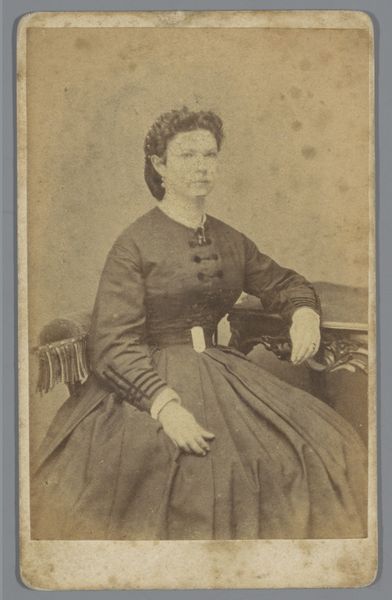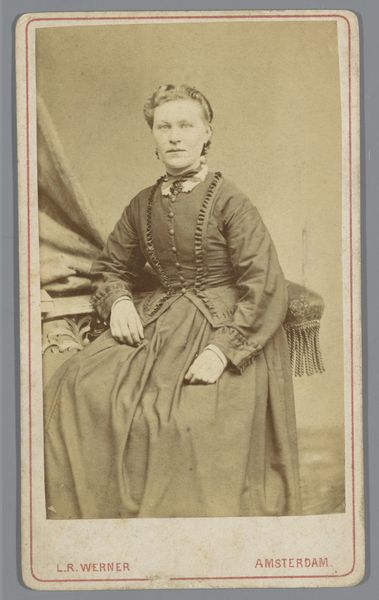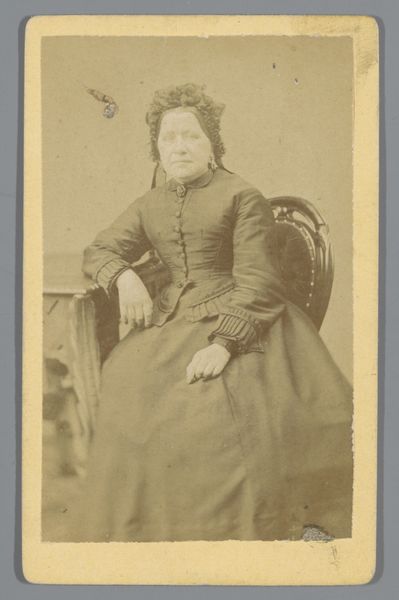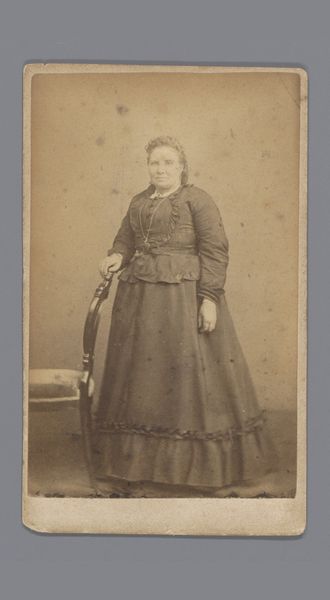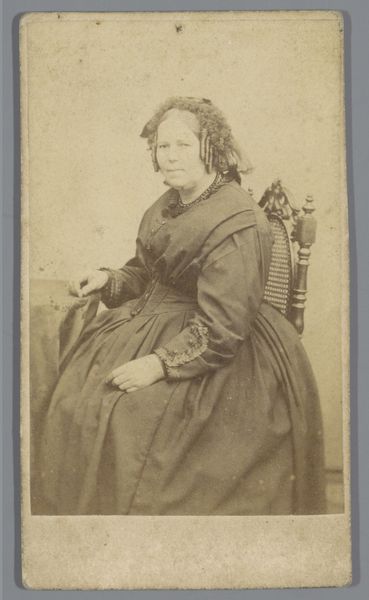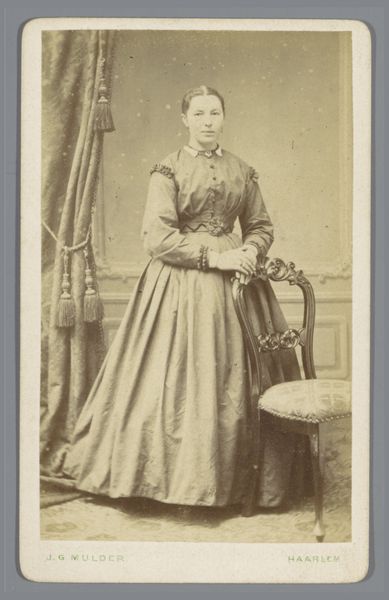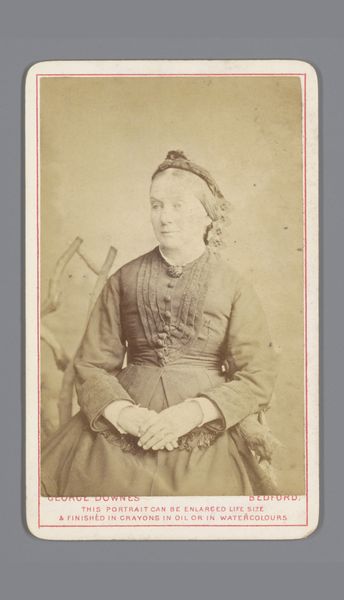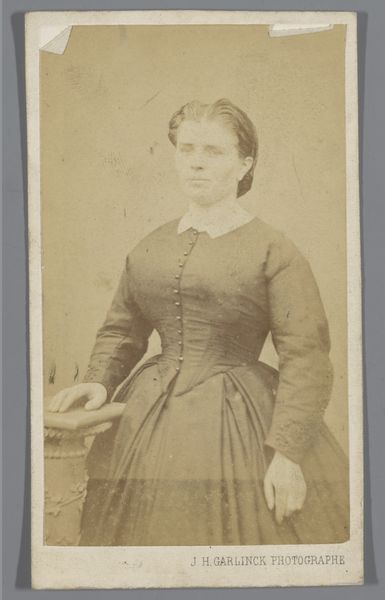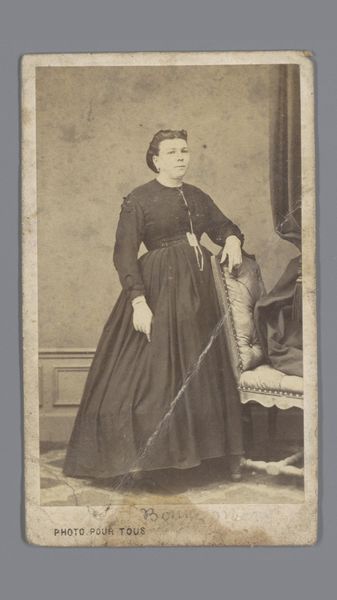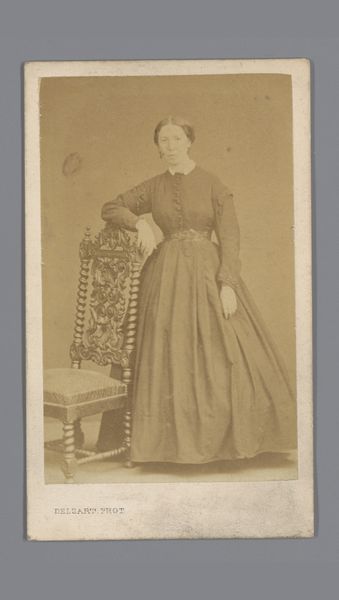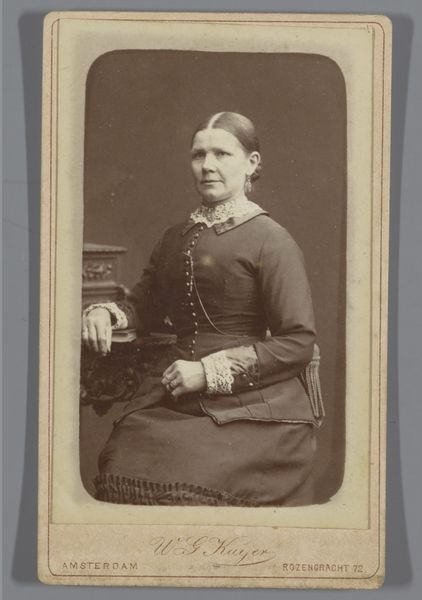![[Member of the Paris Commune: Louise Bonenfant, cantinière et pointeuse dans l’artillerie des fédérés, à perpétuité] by Ernest Eugène Appert](/_next/image?url=https%3A%2F%2Fd2w8kbdekdi1gv.cloudfront.net%2FeyJidWNrZXQiOiAiYXJ0ZXJhLWltYWdlcy1idWNrZXQiLCAia2V5IjogImFydHdvcmtzLzU2ZTBmOTc2LTQyMGYtNDUzZS04Y2Q1LTg4NjdlZGNjYmNhNS81NmUwZjk3Ni00MjBmLTQ1M2UtOGNkNS04ODY3ZWRjY2JjYTVfZnVsbC5qcGciLCAiZWRpdHMiOiB7InJlc2l6ZSI6IHsid2lkdGgiOiAxOTIwLCAiaGVpZ2h0IjogMTkyMCwgImZpdCI6ICJpbnNpZGUifX19&w=3840&q=75)
[Member of the Paris Commune: Louise Bonenfant, cantinière et pointeuse dans l’artillerie des fédérés, à perpétuité] 1871
0:00
0:00
photography
#
portrait
#
16_19th-century
#
photography
Dimensions: Image: 3 5/8 × 2 1/4 in. (9.2 × 5.7 cm) Mount: 4 1/8 in. × 2 1/2 in. (10.4 × 6.3 cm)
Copyright: Public Domain
Curator: Immediately, there’s something undeniably human, resilient in those eyes. She looks like she has seen it all, like she could stare down a cannon and maybe even win. Editor: What strikes me is how Appert, the photographer, captured her presence. This is a portrait taken in 1871. It depicts Louise Bonenfant, a member of the Paris Commune. The title translates to "[Member of the Paris Commune: Louise Bonenfant, cantinière et pointeuse dans l’artillerie des fédérés, à perpétuité]," which, to unpack it, means she was a vivandière—a kind of military canteen worker—and artillery pointer in the National Guard. Curator: It’s more than just a photo, isn't it? It feels like holding a piece of history, a quiet rebellion trapped in sepia tones. Knowing she was actively involved—that shifts the whole reading. Suddenly, the set of her jaw becomes less stubborn, more determined, even inspirational. Editor: Exactly. These images of Communards were, at the time, intensely political. Appert, working under the newly established government, was commissioned to create what essentially became a visual archive of the revolutionaries. It’s complex though because in these photos we see individuals resisting easy labels. Bonenfant challenges stereotypical representations. Curator: Almost a collaboration between subject and photographer. She’s not simply being “captured;” she’s offering herself, or at least a controlled version. I imagine she knew the risks, but there she is, steadfast. Editor: There are elements here of performance of course. Photography in that period was often about carefully constructed presentations. But consider that this image and others like it circulated widely to denounce the Communards, solidifying them as criminals. Think about the bravery inherent in facing a camera under such politically charged circumstances. She and the others chose defiance, even as they stood on the precipice of defeat. Curator: You feel it, right? A thread of human spirit against insurmountable odds? Something that resonates even now… That’s what makes it linger in my mind. A silent scream caught on paper. Editor: I agree. Considering the context adds a certain urgency, as well as weight, to the gaze that meets yours. It forces us to consider the precarious nature of freedom and visibility, who gets to write history, and whose image will be remembered.
Comments
No comments
Be the first to comment and join the conversation on the ultimate creative platform.
